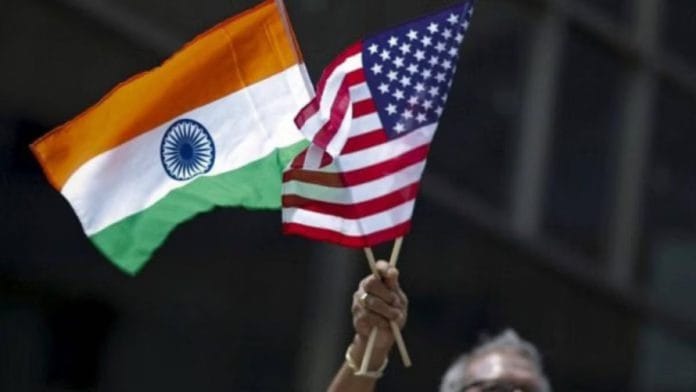New Delhi: US tariffs of 50 percent are “unfair” and “unjustifiable” but talks around trade have been ongoing between New Delhi and Washington D.C, sources in the know told ThePrint. The additional tariffs of 25 percent imposed by US President Donald Trump on New Delhi came into effect Wednesday, raising the total duties of Indian exports to 50 percent.
“We never stopped talking to the US about trade or that raising tariffs to 25 percent or 50 percent is unfair and unjustifiable,” a source said.
The source added that “existing and recent issues of concern regarding trade” were also discussed during the 2+2 intersessional discussions held between India and the US Monday.
The readout published by both India and the US Tuesday on the 2+2 intersessional dialogue acknowledged the discussion on “trade and investment; energy security, including strengthening civil-nuclear cooperation; critical minerals exploration”.
Ties between India and the US have hit a rough patch in the last few weeks. Trump has taken issue in particular with India’s continued purchase of Russian oil, imposing an additional 25 percent tariffs on Indian exports on 6 August. The additional duties are above and beyond the baseline 25 percent tariffs that came into effect on 7 August.
The US administration has also accused India of profiteering from Russian oil. The G7 member-states had imposed a price cap on Russian oil in late 2022 following the start of the Russia-Ukraine war. This ensured that the sale price of Russian crude would be below $60 a barrel.
India’s purchase of Russian crude touched $56 billion in the last financial year (2024-2025).
Earlier Wednesday, US Treasury Secretary Scott Bessent said the Trump administration believes New Delhi’s actions in the ongoing negotiations were at times “performative”, and that India was “tapping along” Washington through the process.
India was one of the first countries to open trade negotiations with the Trump administration. The bilateral trade deal was announced during Prime Minister Narendra Modi’s visit to the US in February this year. However, the negotiations have stalled over America’s demands of further opening of the Indian agricultural and dairy sectors.
For India, these sectors are a red line. While New Delhi was willing to make some concessions regarding processed dairy products and certain agricultural goods, these were seemingly not enough to convince the US to sign a deal.
For India, the US is its largest export market, with merchandise exports touching $86 billion in the last financial year. The new duties imposed by Trump are set to impact over half of India’s total exports. Smartphones, pharmaceuticals and energy are exempt from the new tariffs.
However, Indian exporters in sectors like textiles and apparel, seafood and gems and jewellery are set to be deeply impacted by tariffs as the US is the largest market for these sectors.
External Affairs Minister S. Jaishankar last weekend at a public event said that negotiations for a trade deal have not been cancelled and are ongoing. For India, at a political level, Trump’s claims of mediating a ceasefire between New Delhi and Islamabad during the 87-hour conflict earlier in May has also been an irritant.
However, while trade and political ties are currently turbulent, India-US defence and strategic ties continue operating. At the 2+2 meeting, both countries reaffirmed their intent to sign a 10-year defence framework and sought ways to deepen engagement in this particular aspect of the relationship.
(Edited by Gitanjali Das)
Also Read: ‘Someone isn’t happy with you, but India big enough to weather discomforts’—Fiji PM on Trump tariffs






